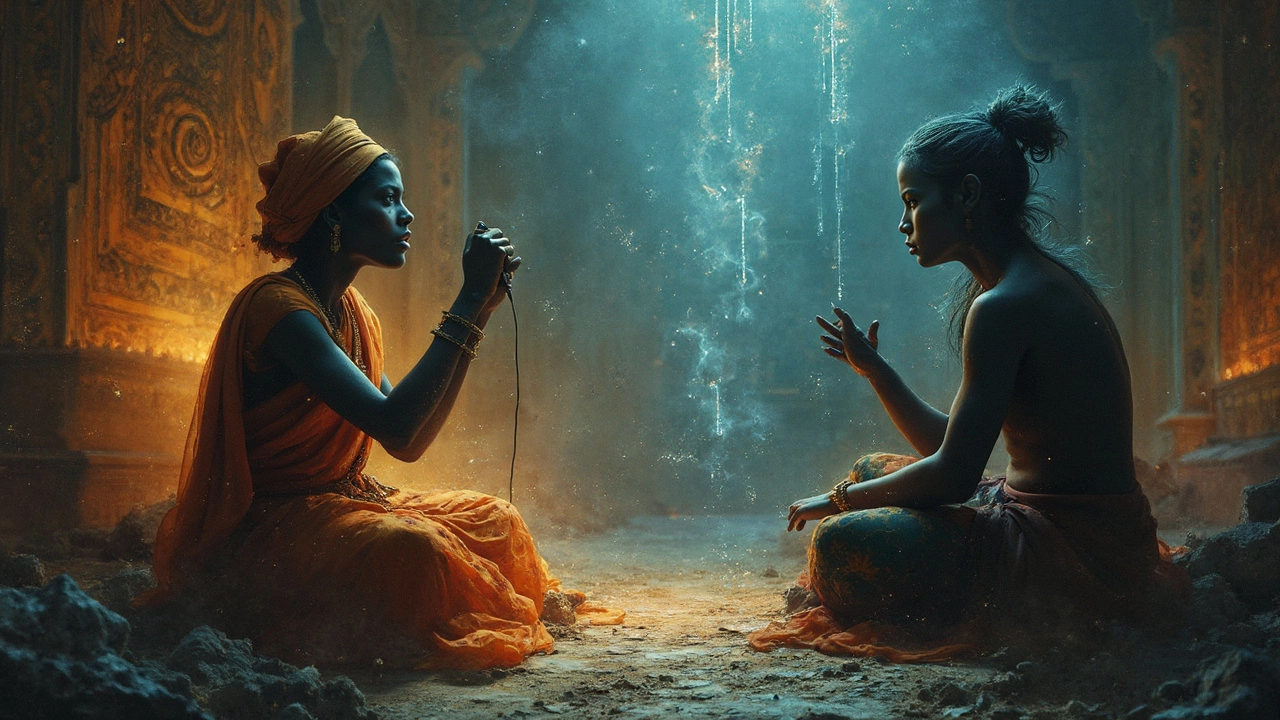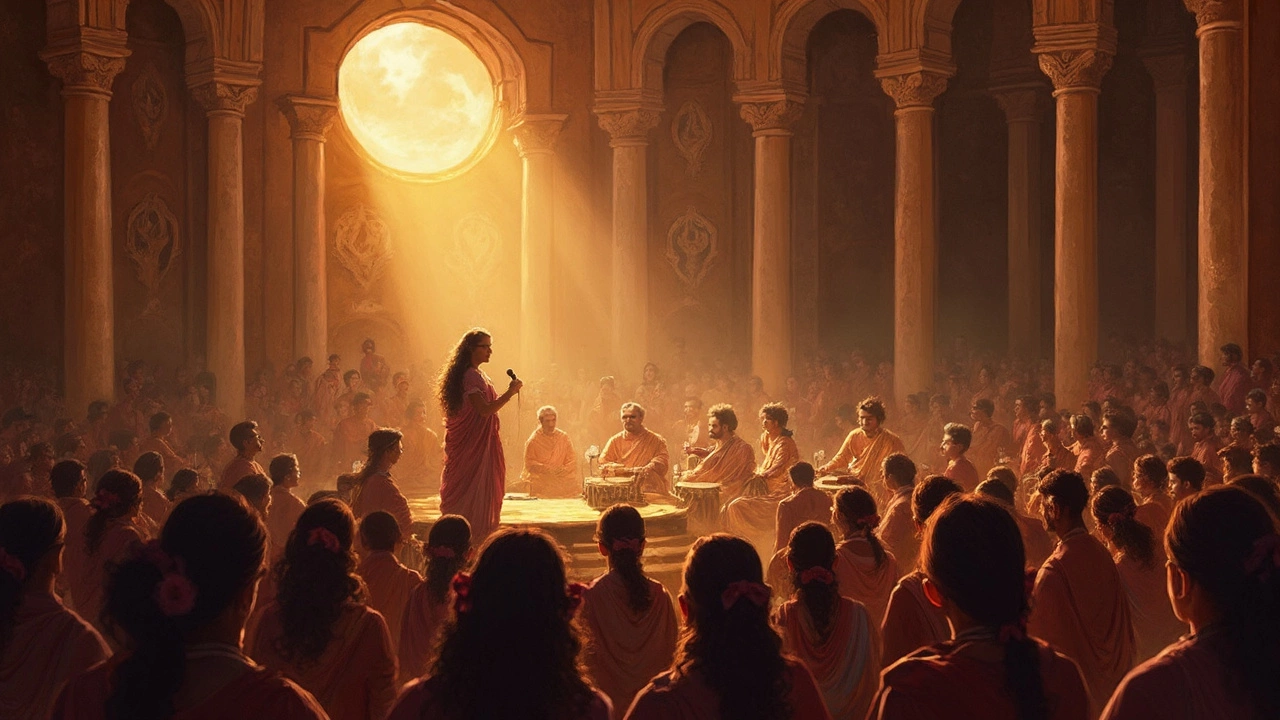When you think about Indian classical music, what's the first thing that comes to mind? Chances are, it's the soulful, deeply expressive vocals, right? This time-honored tradition stands apart with its rich, sonorous melodies—each note carefully crafted to stir deep emotions.
Here's a curious fact: if you're an aspiring vocalist in this genre, falsetto isn't something you'll practice. Why? Well, falsetto is often seen as something outside the natural voice, a sort of 'cheat' tone, if you will. It doesn't align with the soulful, earthy tones that Indian classical music cherishes.
This isn't about putting falsetto down; it's merely about staying true to the traditional sound—a sound that's been perfected over centuries. Stick around, and we'll unravel the reasons behind this interesting exclusion. We’ll also dive into some pretty cool aspects of Indian classical music that make it so unique.
- The Essence of Indian Classical Vocal Techniques
- Understanding Falsetto
- Cultural Significance and Vocal Authenticity
- Historical Perspectives on Vocal Styles
- Impact on Indian Classical Music Identity
The Essence of Indian Classical Vocal Techniques
Dive into the world of Indian classical music, and you'll find it's a universe all its own. At the heart of this musical form is its distinct vocal techniques. Unlike Western music where vocal expression often leans on harmonizing, Indian classical focuses on melody and rhythm. This makes every performance sound like a conversation between the singer and the notes themselves.
A Focus on Ragas and Talas
Indian classical music is woven around ragas and talas. A raga isn't just a scale—it's a mood, a time of day, a season, a feeling. It's the backbone of a performance, giving color and emotion. Then there's tala, the rhythm, which is just as intricate as the melody. It's amazing how singers play with these two, creating something fresh in every performance.
Voice as an Instrument
In Indian music, the voice is not just a medium; it's an instrument of its own. Singers train for years to master this art, honing their voices to produce precise and clear notes. They use techniques like meend (gliding between notes), gamak (oscillations), and kan (grace notes) to add subtle emotional nuances to their performances.
Imagine using your voice to mimic the trill of a flute or the strum of a sitar. It's not just about hitting the right notes—it's about translating the essence of the music through vocal agility and strength.
Improvisation and Expression
What's super cool is how much improvisation is valued. Unlike Western classical where compositions are set in stone, Indian classical allows a lot of room for personal interpretation. It's not unusual for a singer to spend minutes exploring the nooks and crannies of a single raga on the spot during a performance. This isn't just a show of skill; it's a vital part of expressing the depth of the music.
Breath Control and Discipline
One of the things that set Indian classical vocalists apart is their amazing breath control. It's almost like a yoga exercise, with every breath being planned and executed for maximum impact. The discipline to perfect this doesn't come easy. It often takes years of dedicated practice, blending both physical and mental stamina.
This blend of strict discipline and creative freedom makes Indian classical music a real treat for both the musician and the audience. It’s all about achieving the perfect balance and, let’s face it, that’s no small feat.
It's clear, then, why techniques like falsetto find no place here. When the genre itself is rooted in raw, natural vocal talent and precise traditional techniques, there's little space for vocal styles that stray outside these boundaries.
Understanding Falsetto
Alright, so let's get into what falsetto really is. It's when singers hit those high notes by slipping into a different vocal register. Since it's not the singer's natural register, the sound can be breathy or lighter compared to their usual voice. In Western music, especially pop and opera, falsetto adds a bit of drama or emotion to a song. But when we talk about Indian classical music, this technique takes a back seat.
Why the Difference?
Indian classical music is all about authenticity and expression. The voice is the medium through which emotions flow naturally and deeply. Falsetto can sound artificial or disconnected, which is a big no-no in this genre. In Indian music, maintaining the natural quality of the voice helps artists keep that emotional link intact.
Technical Take on Falsetto
For those interested in the physiological side, falsetto involves the vocal cords vibrating in a loose manner, unlike the full, tighter vibrations when singing in the chest voice. This distinction matters because Indian classical singers rely on the full control and depth that chest voice provides, enhancing the intricate nuances of Indian classical melodies.
Ever wonder how different cultures come to favor different vocal styles? Falsetto doesn't match the aesthetics of Indian classical music, which prizes heavy, rich tones that deliver a spiritual experience. That's why this technique remains sidelined, preserving the identity and depth unique to Indian classical vocals.

Cultural Significance and Vocal Authenticity
Indian classical music isn't just about hitting the right notes; it's deeply tied to the culture and spirituality of India. Every raga, every composition carries a piece of history and emotion with it. But what's this got to do with falsetto, you ask? Well, using falsetto in this context is kind of like playing the game and not following the rules—it messes with the authenticity.
Here's the thing: The music demands an unbroken and pure delivery, which means using the full, natural range of one's voice. It's about the genuine connection between the singer and the note. Falsetto, which involves a lighter and breathy tone, doesn't really cut it when aiming for that kind of depth.
Reflecting Emotions
Indian classical music relies heavily on emotions or rasas. Whether it’s the warmth of a sunrise or the sorrow of separation, singers are trained to convey these feelings naturally. Falsetto might dilute this authenticity because it can lack the full-bodied emotional richness this music requires.
Historical Traditions
The roots of Indian classical music trace back millennia, with principles laid down texts like the Natya Shastra. These traditions have thrived on maintaining purity in vocal sound. That's why there's a firm focus on using natural voice techniques rather than venturing into the elevated pitches of falsetto.
Vocal style in Indian classical music is about respecting and evolving the tradition, and this means keeping performances as true to their original intent as possible. It’s not limiting creativity, but rather channeling it in a way that remains faithful to centuries-old practices.
Historical Perspectives on Vocal Styles
Indian classical music is a huge ocean of history and culture. It's evolved over thousands of years, picking up influences along the way yet keeping its essence pure and true. But where does falsetto fit into this long timeline? That's a good question.
The Roots of Indian Classical Music
The roots run deep—like, super deep. We're talking about traditions that trace back to the ancient texts like the Vedas, composed around 1500 BCE. Back then, music was mostly about spiritual expression and rituals. Singers focused on using their natural, full voice, aiming for authenticity in their performance. Artificial tones, like falsetto, weren't really in the picture.
Rise of Strict Musical Norms
Fast forward to the medieval period, when Indian classical music really started to bloom in the courts of various kingdoms. This is when the two main branches—Hindustani and Carnatic—kind of took their own paths. Still, they stuck to the natural vocal tone. Historical scripts and scholars placed a lot of emphasis on voice control and depth, leaving no room for what's often seen as the 'lighter' falsetto.
Impact of Bhakti and Sufi Movements
The Bhakti and Sufi movements around the 15th century focus even more on the human voice's emotional depth. They shaped a lot of the devotional music that reaches right into the heart. These styles leaned heavily on a full-bodied, natural voice to convey deep emotions—another nod to why falsetto stayed in the wings.
All this history set the stage for a vibrant, expressive form of music that values depth and authenticity. That's why, even today, when you hear a raga, it's going to be in a rich, strong voice that makes your hair stand on end. It speaks to both the mind and the soul, keeping its tradition firmly grounded in its history.

Impact on Indian Classical Music Identity
Let's dive into how the absence of falsetto shapes the identity of Indian classical music. It's more than just a missing technique; it's about preserving the tradition's authenticity and emotional depth.
Indian classical music is all about connecting on an emotional level, and the voice plays a starring role in this journey. Singers use their chest voice predominantly, emphasizing natural, earthy tones that convey deep emotions. The use of falsetto, which involves a lighter, airy sound, can disrupt the traditional texture and continuity of these performances.
Authenticity Matters
In Indian classical music, authenticity is key. The genre thrives on deeply rooted cultural practices that have been passed down through generations. Deviating from these practices by using a vocal technique like falsetto could dilute the authenticity that audiences expect and cherish.
A Sound That's Recognizable
Imagine listening to a classic raga and hearing a sudden shift to an airy falsetto. It would be jarring, right? The continuity and flow, central to an immersive classical experience, depend heavily on consistency in vocal technique.
Stats and Tidbits
Did you know that Hindustani classical music has over 20 distinct vocal forms? Each form, whether it's Khayal or Dhrupad, relies on deep, controlled vocal emissions, reinforcing why falsetto isn't part of the mix.
It's not about rejecting modern techniques or sounds. Indian classical music focuses on sustaining a pure sound that remains true to its roots. As classical musicians and enthusiasts would agree, sometimes sticking to tradition is what keeps the music's identity strong and distinguished.
